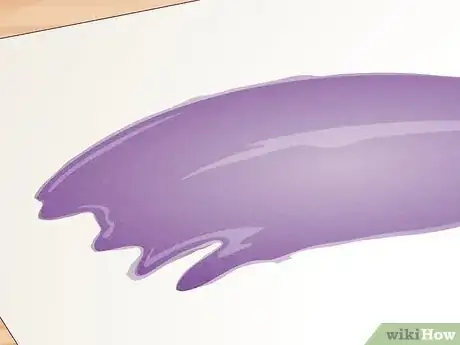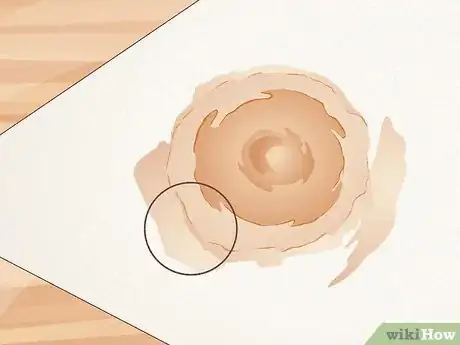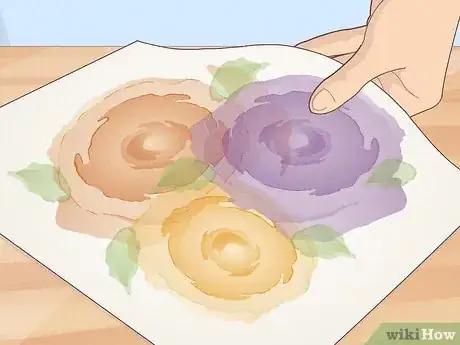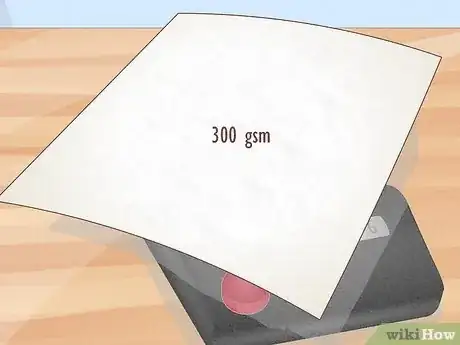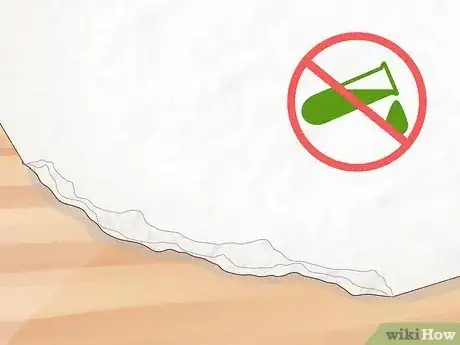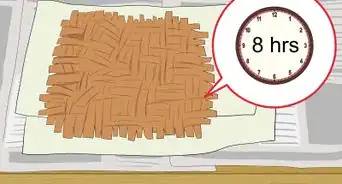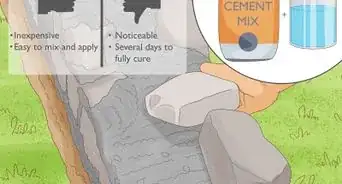This article was co-authored by Kelly Medford and by wikiHow staff writer, Luke Smith, MFA. Kelly Medford is an American painter based in Rome, Italy. She studied classical painting, drawing and printmaking both in the U.S. and in Italy. She works primarily en plein air on the streets of Rome, and also travels for private international collectors on commission. She founded Sketching Rome Tours in 2012 where she teaches sketchbook journaling to visitors of Rome. Kelly is a graduate of the Florence Academy of Art.
There are 14 references cited in this article, which can be found at the bottom of the page.
This article has been viewed 1,881 times.
There are many choices to consider when working with watercolors, like choosing your paints, brushes, and the techniques you’ll use. But the kind of paper on which you paint is among the most important choices to make, and the differences between hot press and cold press paper aren’t immediately clear. Which one is better? Which one is right for you? The short answer, like so many questions about art, is that it comes down to personal preference. That said, we’ve compiled a simple guide that will fill you in on the different qualities of hot and cold press watercolor paper, as well as the best advice for choosing which one is right for you.
Things You Should Know
- Choose hot press paper if you prefer a smooth surface that allows for brighter colors and sharper details.
- Choose cold press paper if you like a more rough, durable paper that absorbs paint more easily and makes for softer paintings.
- Opt for rough watercolor paper (essentially an even rougher cold press) if you want even more dramatic watercolor textures, like greater bleeding, texture, and brush effects.
Steps
Hot Press Paper
-
1Hot press paper has a smooth surface. Toward the end of the paper making process, hot press watercolor paper is sent through heated “calendar rolls,” which compress the paper and add its final texture, or “tooth.” The heat in the calendar rolls smooths out the paper the same way a clothes iron smoothes out a pair of pants, lending the paper a nice, smooth surface.[1]
-
2Hot press paper absorbs paint slowly. Hot press paper is highly compressed and has a smooth surface, so paint takes a bit longer to seep into hot press paper. This allows an artist using watercolors to move and manipulate paint on its surface for a bit longer before the paint becomes permanently absorbed. An artist might even lift the paint off the paper with a bit of paper towel if they applied too much![2]
- That said, paint tends to dry faster on hot press paper, which means an overall shorter period in which the paint is workable.[3]
Advertisement -
3Paint bleeds less on hot press paper. Hot press paper is more dense, so paint tends to absorb straight down into the paper, rather than spreading out across the surface of the paper. This makes for cleaner edges and more predictable and manageable paint spreading.[4]
-
4Colors are more vivid on hot press paper. Since hot press paper is so smooth, pigments sit closer to the surface of the paper, rather than absorbing deeply. On top of that, the flat surface reflects more light, causing the colors to appear more intense.[5]
Cold Press Paper
-
1Cold press paper has a rough surface. Cold press paper is also sent through calendar rolls, though as opposed to hot press paper, these rolls aren’t heated. In addition, the rolls apply less pressure to the paper. This lighter pressure and lack of heat allows the paper to keep its bumpy surface.[6]
-
2Cold press paper absorbs paint faster. This allows for more paint layering, since paint absorbs more easily into cold press paper. You may be able to achieve deeper, more complex colors by painting over a section more than once, or painting over one section with a different color.[9]
-
3Cold press paper provides more paint bleeding and other effects. The less-dense nature of cold press paper means that paint can travel more easily through the fibers of the paper. This means paint not only goes down into the paper, but also spreads or bleeds across the paper, which makes for a more typical “watercolor look.”[10]
- In addition, the bumpy surface of cold press paper allows the brush to graze across the paper, creating an uneven, textured appearance, which are great when painting watercolor landscapes.
- Cold press paper is also great for wet-on-wet techniques, which provide softer edges.
-
4Cold press paper is more durable. Cold press paper can generally absorb greater quantities of paint and water before it begins to warp or tear.[11] This makes cold press paper great for artists who like to saturate their paper with a lot of paint, or who work with a heavier hand.
Choosing Watercolor Paper
-
1Choose hot press paper for mixed media projects and precise details. Hot press paper’s smooth surface makes it more similar to other kinds of art paper, like sketch paper, so it tends to work well with a number of mediums, like pencils, markers, pastels, etc. That also means it can showcase harder edges and sharper details. Opt for hot press paper if you plan to use more than just watercolor paints in your project.[12]
- Though hot press paper is similar to other papers, it can still absorb and hold plenty of water, unlike regular printer paper, which buckles when wet.
-
2Choose cold press paper if you’re a beginner or want a more textured look. Cold press paper’s textured surface lends it quite a bit of visual interest—the peaks and valleys of the paper cause paints to settle in a more interesting, organic nature, which many watercolor artists prefer.[13] It also absorbs more paint, allows for softer edges, blends more easily, and is more durable than hot press paper, so it’s considered much more forgiving for beginners when they’re first approaching watercolor painting.[14]
-
3Opt for rough paper if you want even more watercolor effects. The third kind of watercolor paper is rough paper. It’s similar to cold press, but has an even rougher surface, hence the name. This surface means you’ll get more absorbency, even softer edges, more intense texture, and more dramatic brush effects. That said, it’s more difficult to work with than cold press paper.[15]
-
4Choose a 300gsm paper weight to start. Watercolor paper weight is measured in “gsm,” or grams per square meter. The higher the gsm, the denser the paper, and the more liquid the paper can absorb before it begins to deteriorate. Most watercolorists prefer 300gsm paper, but choose a higher gsm if you plan to use more paint, or a lower gsm if you have a lighter hand.[16]
-
5Select a cotton or cellulose paper. Watercolor paper tends to come in 3 materials: wood pulp, cellulose fibers, and cotton. Wood pulp paper is generally considered lower quality, while cellulose paper may vary greatly in quality, but is often more affordable. Cotton watercolor paper is considered the standard—it’s sturdy, consistently textured, and holds paint well.[17]
-
6Opt for a low-acidity or acid-free paper. Some papers may have a low (or acidic) pH, which can deteriorate both the watercolor paint and the paper itself over time. It’s best to choose an acid-free paper, or a paper with a high pH (often indicated on the packaging label) so that your artwork has a longer lifespan.[18]
References
- ↑ https://www.strathmoreartist.com/blog-reader/mixed-media-vs-watercolor-paper.html
- ↑ https://yourartbox.com/hot-vs-cold-press-watercolor-paper/M
- ↑ https://www.youtube.com/watch?v=D_AnLl0PMlo&t=385s
- ↑ https://www.youtube.com/watch?v=TiVpc7O-umM&t=342s
- ↑ https://www.youtube.com/watch?v=D_AnLl0PMlo&t=401s
- ↑ https://www.strathmoreartist.com/blog-reader/mixed-media-vs-watercolor-paper.html
- ↑ https://www.youtube.com/watch?v=TiVpc7O-umM&t=354s
- ↑ https://www.jacksonsart.com/blog/2016/09/13/understanding-watercolour-paper-visual-guide/
- ↑ https://yourartbox.com/hot-vs-cold-press-watercolor-paper/
- ↑ https://www.youtube.com/watch?v=TiVpc7O-umM&t=395s
- ↑ https://createlet.com/best-watercolor-paper/
- ↑ https://www.youtube.com/watch?v=D_AnLl0PMlo&t=367s
- ↑ https://www.youtube.com/watch?v=TiVpc7O-umM&t=395s
- ↑ https://homesthetics.net/cold-press-vs-hot-press-vs-rough-watercolor-paper/
- ↑ https://youtu.be/D_AnLl0PMlo?t=502
- ↑ https://homesthetics.net/cold-press-vs-hot-press-vs-rough-watercolor-paper/
- ↑ https://createlet.com/best-watercolor-paper/
- ↑ https://www.artnews.com/art-news/artists/the-right-tapes-for-art-and-conservation-1234616052/



